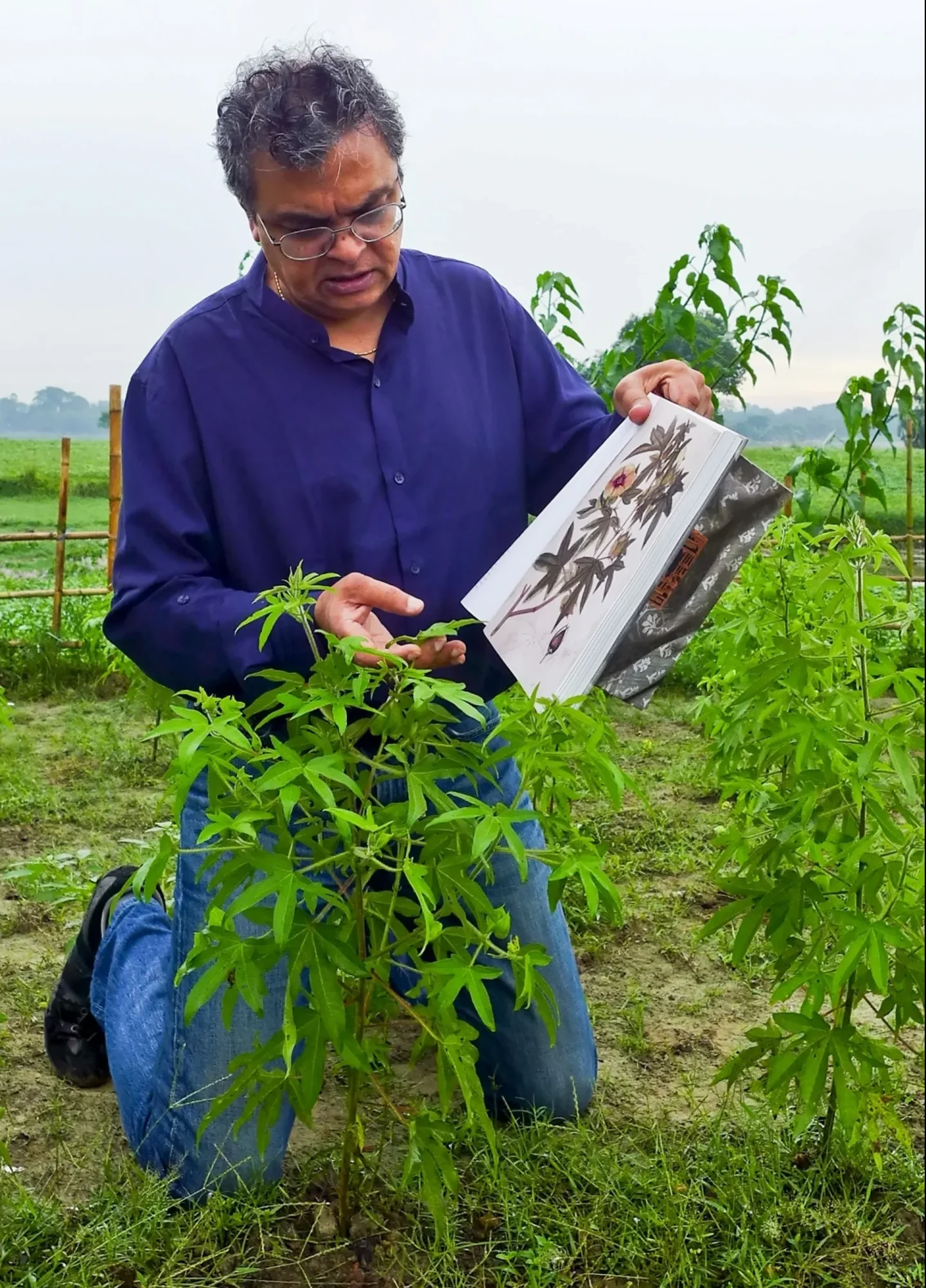- Tel: +880-2-8141817, 58153087, 9120125
- Email:info.bengalmuslin@gmail.com
Muslin Cotton

Saiful Islam with resurrected phuti karpas cotton plants identical to the kind used to grow Dhaka muslin hundreds of years ago
Muslin was manufactured from the yarn of a unique cotton plant known as ‘phuti karpas’, scientifically termed as ‘Gossypium Arboreum Var. Neglecta’. The first commercial mention of Indian cotton is in the Periplus of the Erythraean Sea (63 BC) by an unknown scholar and considered as one of the more reliable records of trade in the Indian Ocean area during that era.
The text states that ‘The fine cotton cloths (muslins) reputed to come from Bengal’ and known to Greeks as, ‘Gangitiki’. Furthermore, that ‘muslins of the finest sorts, which are called Gangetic’, were shipped from a ‘market town’, which has the same name.
Ralph Fitch, who travelled in India in 1583, speaks of the finest cotton cloth being made at ‘Sinnergan’ (the later Sonargaon, a historic town near Dhaka which was the seat of government during the Bengal Sultanate).
Professor Abdul Karim, in his book, ‘Dhakai Muslin’(1963), points out that although karpas was grown in most of Bengal, muslin was woven with karpas plants that grew only in areas near Dhaka. He wrote, ‘For muslin … [of] the best quality phuti karpas was used. Phuti karpas grew only along the western bank of the Meghna river’. Today, most indigenous varieties of cotton have been replaced – sadly – by the American variety.
Though the phuti karpas is believed to be extinct, our team, since mid-2014, visited multiple locations on the river banks of Bangladesh, from Kapasia in Gazipur to Mymensingh, Barisal and the Chittagong Hill Tracts. We have gone as far afield as Jordan (to inspect its herbariums), Kew Gardens (UK), to Assam and Kolkata in India to collect samples and to bring them to be replanted (with support from the Bangladesh Cotton Development Board) along the banks of the Meghna.
By collecting samples from the fossilised specimens of phuti karpas preserved in international arboreums, Bengal Muslin has initiated and conducted pioneering research into the DNA of the original plant. Samples have been matched to the original specimens genome, shared with researchers in Bangladesh and used for recultivation in the same historical areas.
‘… there’s one particular variety of Gossypium Arboreum that’s mentioned in all texts as being really important for muslin production around Dhaka, which has this bright-red stem which is shown in the painting in the East India Company collection’ – Dr. Mark Nesbitt, Curator, Economic Botany Collection, Kew Gardens
A 70 percent match to the original phuti karpas was finally found in 2017.
Currently, we continue to cultivate the crop, grow cotton and manufacture high count yarn (which is spun abroad), that blends both phuti karpas and Indian cotton. Our goal is to use 100% locally grown cotton over time.


